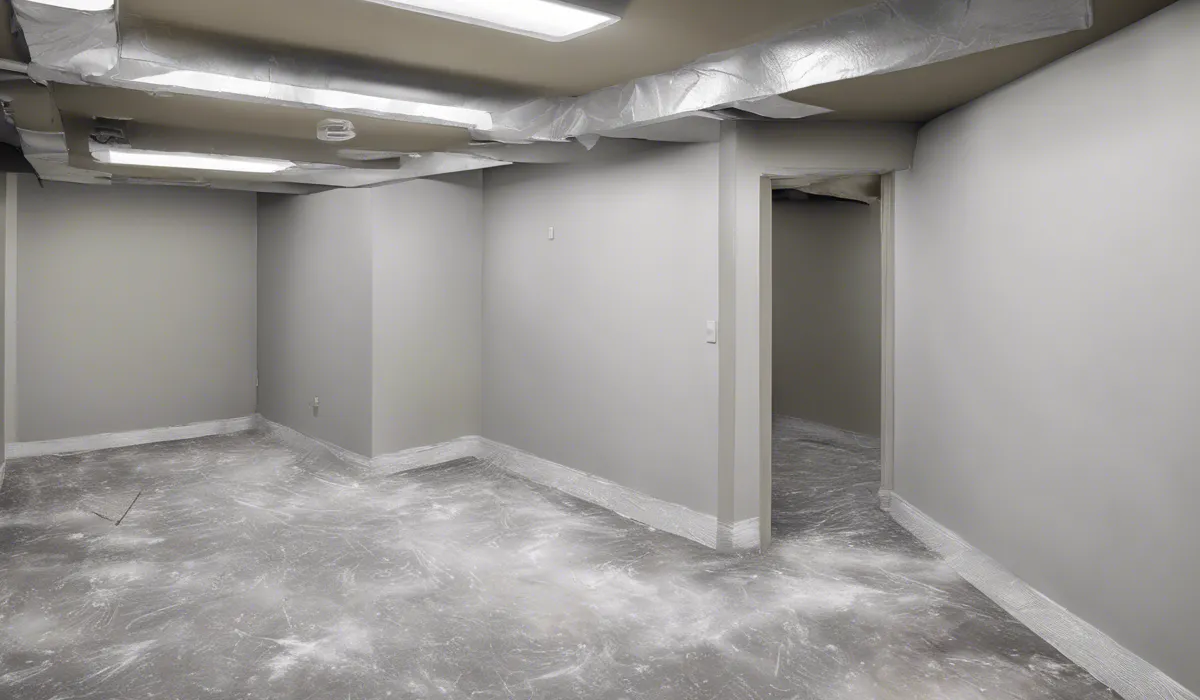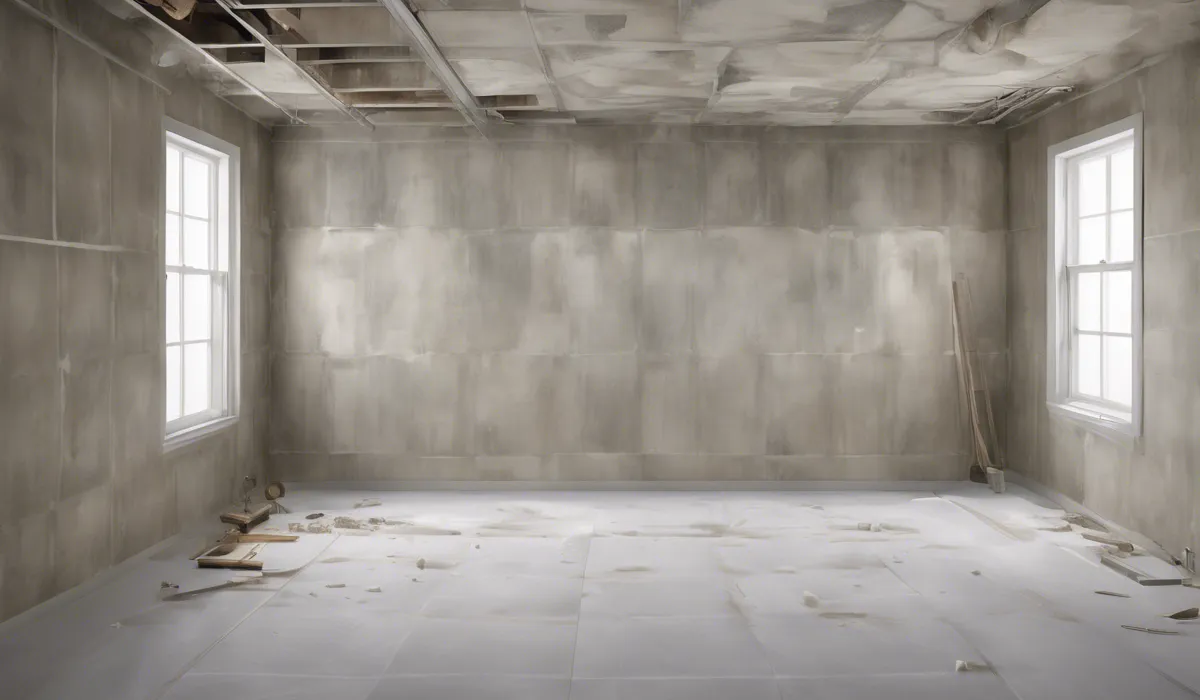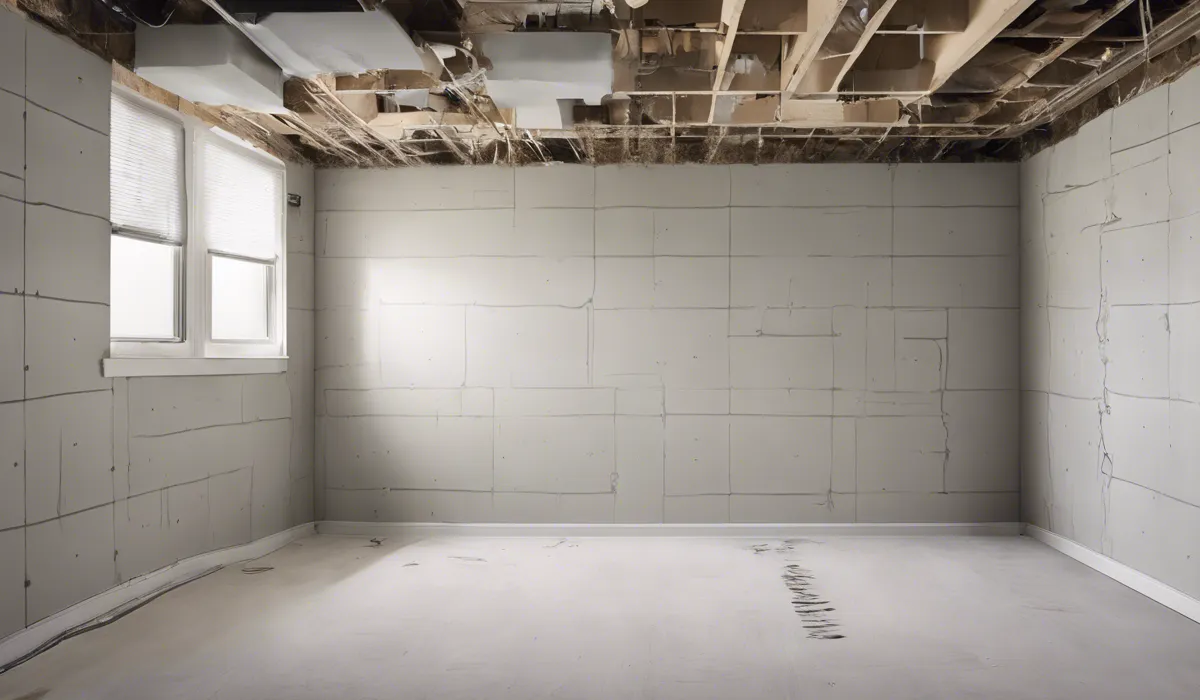Yes, mold-resistant drywall is advisable in basements due to higher moisture levels, which can foster mold growth. It’s specifically designed for damp areas, providing an extra layer of protection against mold and mildew compared to regular drywall.
Understanding Mold-Resistant Drywall

What Is Mold-Resistant Drywall?
Mold-resistant drywall is a specialized construction material designed to withstand moisture and reduce the risk of mold growth.
Unlike traditional drywall, which can absorb moisture and become a breeding ground for mold, mold-resistant drywall contains materials that prevent water absorption and mold development.
It is particularly beneficial in areas prone to dampness and humidity, such as basements.
Differences from Regular Drywall
Regular drywall, also known as gypsum board, is made of a gypsum core pressed between two sheets of paper.
When exposed to moisture, these paper surfaces can become hospitable to mold.
Conversely, mold-resistant drywall is typically covered with fiberglass, eliminating the organic paper food source that mold spores require to thrive.
This key difference makes it a more suitable option for humid environments.
Importance of Moisture Control in Basements
Basements are often susceptible to moisture due to their below-ground location. Moisture can seep through foundation walls or be caused by flooding, leaks, or condensation.
Effective moisture control is crucial to prevent mold growth, which can damage the structure of your home and create health problems for its occupants.
Materials in Mold-Resistant Drywall
Materials used in mold-resistant drywall, such as fiberglass and specially formulated gypsum core, are designed to resist water and prevent mold.
Some types also include antimicrobial agents to further inhibit mold growth. By using these materials, mold-resistant drywall offers an extra layer of protection in moisture-prone areas.
Assessing the Need for Mold-Resistant Drywall in Basements

Factors Contributing to Moisture and Mold
Several factors contribute to moisture and mold problems in basements, such as poor ventilation, high humidity, water leaks, and flooding.
The lack of natural light and cooler temperatures can also create conditions favorable for mold. Addressing these issues is essential in maintaining a healthy basement environment.
Identifying Signs of Mold
Visible mold growth, musty odors, and water stains are clear indicators of a mold issue in your basement.
Persistent allergies or respiratory problems among household members might also signal the presence of mold. It is important to regularly inspect your basement for these signs.
Comparing Basement Conditions
Basements with ongoing dampness, a history of water intrusion, or limited airflow are prime candidates for mold-resistant drywall.
If your basement remains dry and well-ventilated, regular drywall may suffice; however, mold-resistant drywall offers peace of mind against future moisture issues.
Long-Term Benefits of Mold-Resistant Materials
Investing in mold-resistant materials for your basement can save you money and trouble in the long run.
These materials reduce the risk of mold-related health concerns and structural damage, leading to a safer living environment and potentially lower home maintenance costs.
Installation and Maintenance Tips for Mold-Resistant Drywall

Best Practices for Installation
Properly installing mold-resistant drywall is crucial for its effectiveness.
Ensure the basement is dry before installation, use moisture-resistant joint tape and compound, and seal gaps to prevent moisture ingress.
Hiring a professional can ensure a proper installation.
Moisture-Resistant Basement Environment
Maintaining a moisture-resistant basement involves controlling humidity with dehumidifiers, ensuring proper ventilation, and fixing leaks promptly.
Exterior waterproofing and proper drainage around the foundation can also prevent water from entering the basement.
Maintenance Recommendations
Regular inspection and cleaning of your basement are important to maintain the effectiveness of mold-resistant drywall.
Address any moisture issues immediately, and repaint with mold-resistant paint as needed to keep the drywall in good condition.
Complementary Measures Against Mold
In addition to mold-resistant drywall, consider integrating other measures such as using mold-resistant flooring, applying waterproof sealants to walls, and ensuring all ceiling boxes and toilet flanges are properly sealed.
These steps, along with regular maintenance, can offer comprehensive protection against mold in your basement.
FAQs About Mold-Resistant Drywall in Basements
Do I need mold-resistant drywall in my basement?
Yes, due to the higher moisture levels typically found in basements, mold-resistant drywall is advisable as it provides an extra layer of protection against mold and mildew.
Is mold-resistant drywall necessary in all areas of a basement?
It is especially beneficial in areas prone to dampness or water exposure, but using it throughout the basement can offer comprehensive protection against mold.
What makes mold-resistant drywall different from regular drywall?
Mold-resistant drywall is specifically designed for damp areas and contains materials that resist moisture and prevent the growth of mold and mildew.
Can mold-resistant drywall completely prevent mold in basements?
While it significantly reduces the risk of mold growth, proper ventilation and moisture control are also necessary to prevent mold in basements.
Is there a significant cost difference between mold-resistant and regular drywall?
Mold-resistant drywall is typically more expensive than regular drywall, but the cost can be justified by its increased resistance to moisture and potential mold issues.
Final Thoughts
Mold-resistant drywall is highly recommended for basements due to the prevalent moist conditions that can lead to mold proliferation.
It is engineered for such environments, offering a protective barrier against mold and mildew, which surpasses the capabilities of standard drywall.
This makes it a prudent choice for basement construction or renovation projects.
